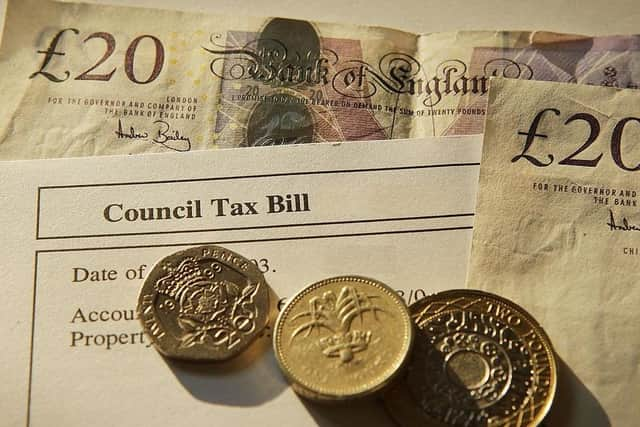Huge council tax rises confirmed from April - how to check costs in Midhurst and Petworth
and live on Freeview channel 276
Chancellor Rishi Sunak announced in the latest budget that councils could hike rates by up to three per cent without having to hold a referendum and on top, can add an additional two per cent which is ring fenced for adult social care.
Some councils may add more to the adult social care portions, as it can be carried over from last year.
Advertisement
Hide AdAdvertisement
Hide AdAny new council tax rates always take effect from the start of April, to coincide with the new tax year.


Councils across the UK are now starting to confirm how much residents will see their bills increase by in just over a month, with these new rates to remain in place until March 2023.
Surrey County Council and Lincolnshire County Council have approved separate 4.99 per cent rises, while people living in Lancashire, Buckinghamshire and Southend will see rises of 3.99 per cent.
Households in Worcestershire will see bills go up by 3.94 per cent, and a 2.99 per cent hike has been proposed in West Sussex, Kent, Suffolk, Liverpool, Stoke on Trent, Leeds, Derby, Luton and Islington.
Advertisement
Hide AdAdvertisement
Hide AdEast Sussex County Council has agreed a 1.99 per cent council tax increase.
As each council is in charge of setting their own rates, residents will need to check the website of their local authority to see if they have proposed a council tax rise yet.
How do I check how much my council tax is going up?
The amount of tax you will pay is determined by your local council and will depend on what band your home falls under.
Every property is placed into a council tax band, which is based on the value your home would have been worth in April 1991.
Advertisement
Hide AdAdvertisement
Hide AdThe more expensive a property is, the higher the amount of council tax you will be charged.
In England and Scotland, houses are categorised into one of the following eight bands:
Band A – up to £40,000
Band B – £40,000 to £52,000
Band C – £52,000 to £68,000
Band D – £68,000 to £88,000
